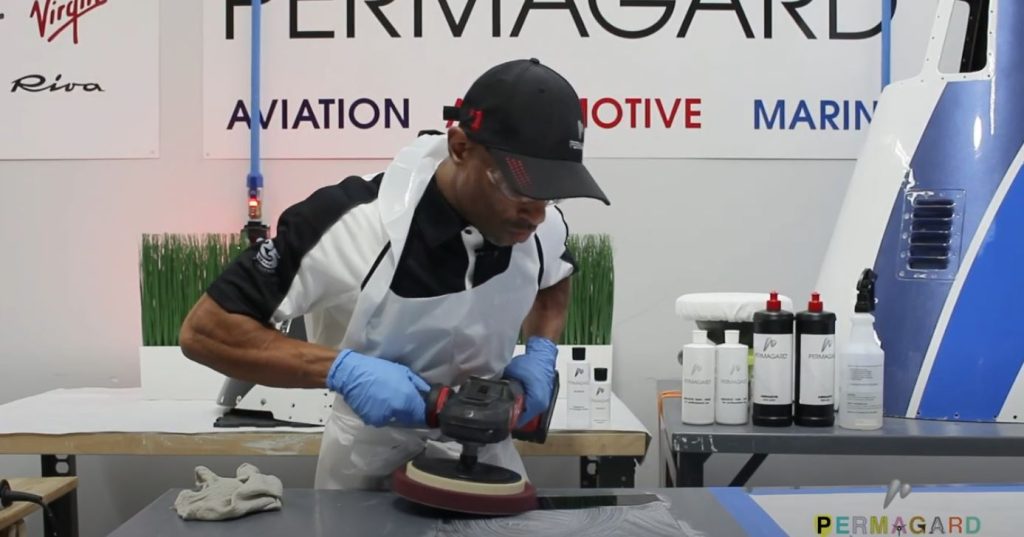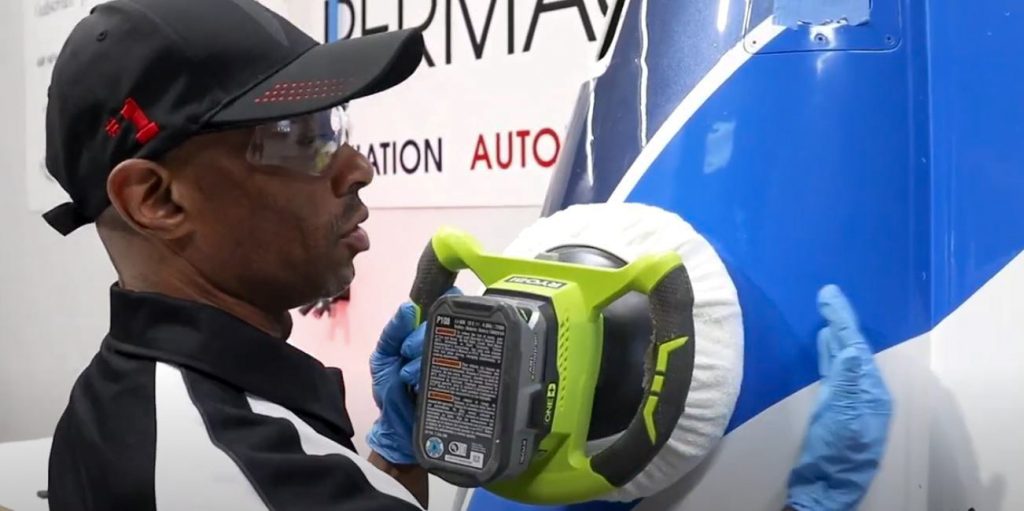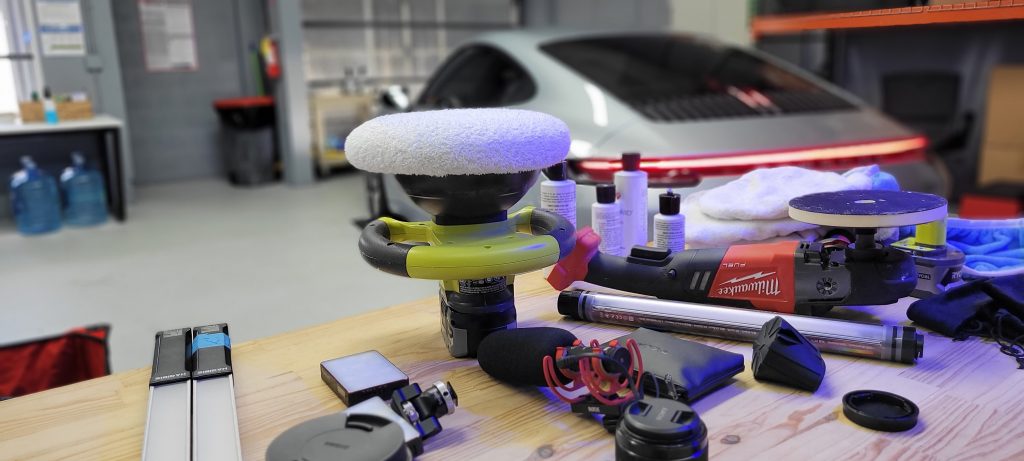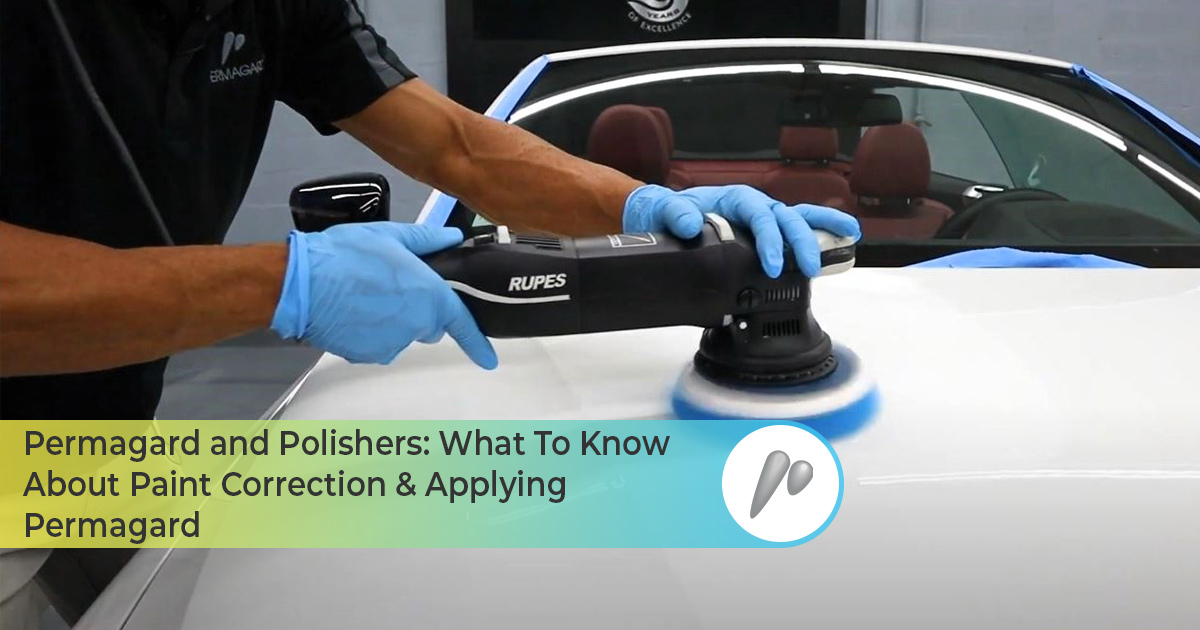Understanding Different Types of Polishers for Aircraft Paint Protection
When it comes to restoring painted surfaces or applying Permagard, it’s good to know the different types of polishers to use. Each type of polisher has its advantages and disadvantages. Knowing which one to use for each job is imperative to provide the best experience for the detailer and the best result for the customer.

The Benefits of Rotary Polishers for Paint Correction
Rotary polishers (also known as high-speed polishers) have been around for more than 50 years and are still used today for paint correction. This polisher spins the pad exclusively in a circular motion with no secondary action. They are the most effective tool for cutting (correcting) paint to polish out deep surface imperfections on painted surfaces. Rotary polishers are very popular among aircraft detailers particularly when pairing them with a wool pad for a terrific cutting combination. Permagard Abrasives are also the perfect compound to pair with a rotary polisher and wool pad to achieve great correction results. Aircraft paint is very hard, so minimizing the appearance of swirl marks, scratches, and marring can be difficult if you don’t have an aggressive cutting combination. Applying some pressure while correcting paint can sometimes be an effective method as well to diminish a deep surface imperfection. Rotary polishers are also quite effective for marine detailers working on yachts that encounter a ton of harsh waterline marks and are very effective at diminishing or eliminating these marks altogether. Even automotive detailers still use rotary polishers today, just as they did more than 50 years ago. However, a disadvantage to using a rotary polisher is that they tend to leave swirl marks behind. Also, due to their aggressive cutting technique, they also produce heat more quickly on a painted surface than orbital polishers and dual-action polishers can. You must be incredibly careful when correcting paint with a rotary polisher. Being too aggressive could have dire consequences for the painted surface, such as burning through the paint and removing the clearcoat or even basecoat. Rotary polishers should only be utilized by detailing professionals or DIYers that have years of machine polishing experience.

Why Dual-Action Polishers Are Ideal for Applying Permagard
Dual-action polishers (also known as random orbital polishers) are the most popular type of polishers utilized today. These polishers spin the pad in a circular motion, while also producing a randomized orbital motion. Hence the name, they are performing two actions simultaneously. Dual-action polishers are not only useful for applying protective coatings, such as Permagard, but they are also used for paint correction as well. While their use for paint correction is rare, due to the lack of cutting power they offer, they can still be effective with the right pad and compound agent, such as Permagard Abrasives. Due to the orbiting action produced by the polisher, fewer swirl marks will appear on the painted surface that it’s being used on. This also makes them a safer option to use for paint correction. However, they are not as effective as the rotary polisher when cutting paint. Rotary polishers are not suitable for the application of Permagard protective coating products because they are incapable of mimicking a hand’s motion that is required for Permagard to bond effectively to painted surfaces. The dual-action polisher makes this one of the safest polishers to use overall and a great option for applying Permagard to any car, boat, or aircraft. They are also very easy to learn how to use and an excellent tool for beginners learning how to detail.

Gear Driven Polishers: A Versatile Tool for Detailers
Gear driven polishers (also known as forced rotation dual-action polishers) were invented as a middle ground between a rotary polisher and a dual-action polisher. It combines the powerful rotation of a rotary polisher with the random orbital motion of a dual-action polisher. It actually operates quite similarly to a dual-action polisher, except for one major difference. No matter how much pressure is applied to the polisher during use, the pad will continue to spin. This is quite similar to rotary polishers and is a big reason why they are also effective at correcting paint. Gear driven polishers are a great multi-tool for detailers looking to correct paint in a non-aggressive way and apply Permagard after their cutting process. They have variable speed settings, including higher settings for cutting paint, and lower settings for applying protective coatings like Permagard. However, they are a step up in the skill department when it comes to learning how to use polishers effectively. Due to the forced rotation of this tool, heat can still generate quickly in an area if it is not properly used. Gear driven polishers are also a great option for detailing novices and professionals that want to apply Permagard to painted surfaces. They are suitable for beginners, but they do have a slightly steeper learning curve when compared to dual-action polishers.

Advantages of Permagard Over Other Paint Protection Products
Permagard should always be applied with an orbital polisher, a dual-action polisher, or a gear driven polisher. Using the proper tools for a Permagard application is incredibly important to achieve the best results with our products. A rotary polisher can be utilized before a Permagard application, but only for using Permagard Abrasive products during a paint correction process. However, it’s good to keep in mind that Permagard can also be applied to any painted surface, without the requirement for paint correction. Our competitors require paint correction before every application of their products, which in turn, harms your paint before protecting it. With Permagard, you always have the option to correct a painted surface to diminish scratches and swirl marks, but it will never be a requirement before the application. Permagard’s flexibility, in its forms of protection and ease of application, is one of the many things that our customers love most about our products. Permagard coating products also fill in micro-scratches, allowing installers to skip paint correction processes if they so choose. Other coating products will magnify micro-scratches making them more noticeable to the naked eye after the protective coating product has been applied.
If you would like to learn more about the types of polishers mentioned in this article or have any questions about how Permagard is applied, contact our Permagard Headquarters office today at (305) 662-5070 for more information. It’s time to shine and see yourself in your brand!

